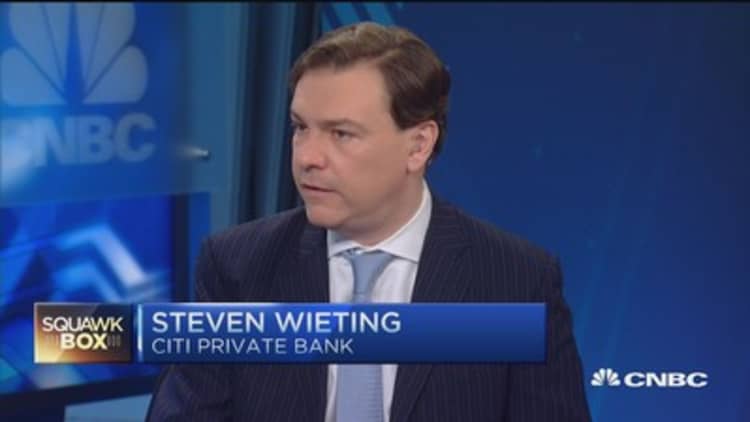
European markets have more potential to break out, but the continent's fate is still tied to growth in the United States, Citi Private Bank's Steven Wieting said Wednesday.
"Tactically, if you look at what's going on in Europe, you have the combination of accelerating economic growth from a very low base [and] quantitative easing. It's a financial accelerant, but we're starting with an 11 percent unemployment rate, down from 12," Wieting said on CNBC's "Squawk Box." "There's just more room to run as long as the global recovery remains intact, and that depends on the United States."
The unemployment rate in the United States stood at 5.4 percent in April.
International markets remain remarkably liquid right now as central banks support stimulus programs, something the United States is now lacking after three rounds of Federal Reserve bond-buying, said Wieting, Citi Private Bank's global chief investment strategist and CIO.
What U.S. markets really need is strong growth acceleration, he said.
"I'm afraid after six years, this is what it is. It isn't any stronger than this. We've had declines in the unemployment 1 percentage point per year at a relatively slow growth rate," he said.
Read More No more closet indexing, time to get active
U.S. markets are torn between when the Federal Reserve will raise interest rates—and what it means when they do—and how strong the economy is, said Kevin Holt, chief investment officer at Invesco.
With the S&P 500 multiple in the high teens, many stocks are now looking fully valued following the six-year bull market, he added.
"We've been waiting six years for an interest rate increase. I think any hope that interest rates do go up means we actually have an economic cycle and we're not stuck in kind of a low-growth, grinding type of Japan environment," he said. "I think the market is really wanting rates to go up in a slow fashion as we move forward."
The central bank is widely expected to raise interest rates in 25 basis point increments after holding its benchmark rate near zero since December 2008. It has said it will determine the start and pace of rates hikes depending on the strength of U.S. economic data.
How and why the Fed hikes rates is important, Wieting said, adding that ultimately the Fed wants to provide some token measures for tightening.
"If it's just to show, 'Hey, we did some tightening,' as opposed to sort of acknowledging a stronger cycle and getting it, I think the two things mean different things for the markets," he said.


